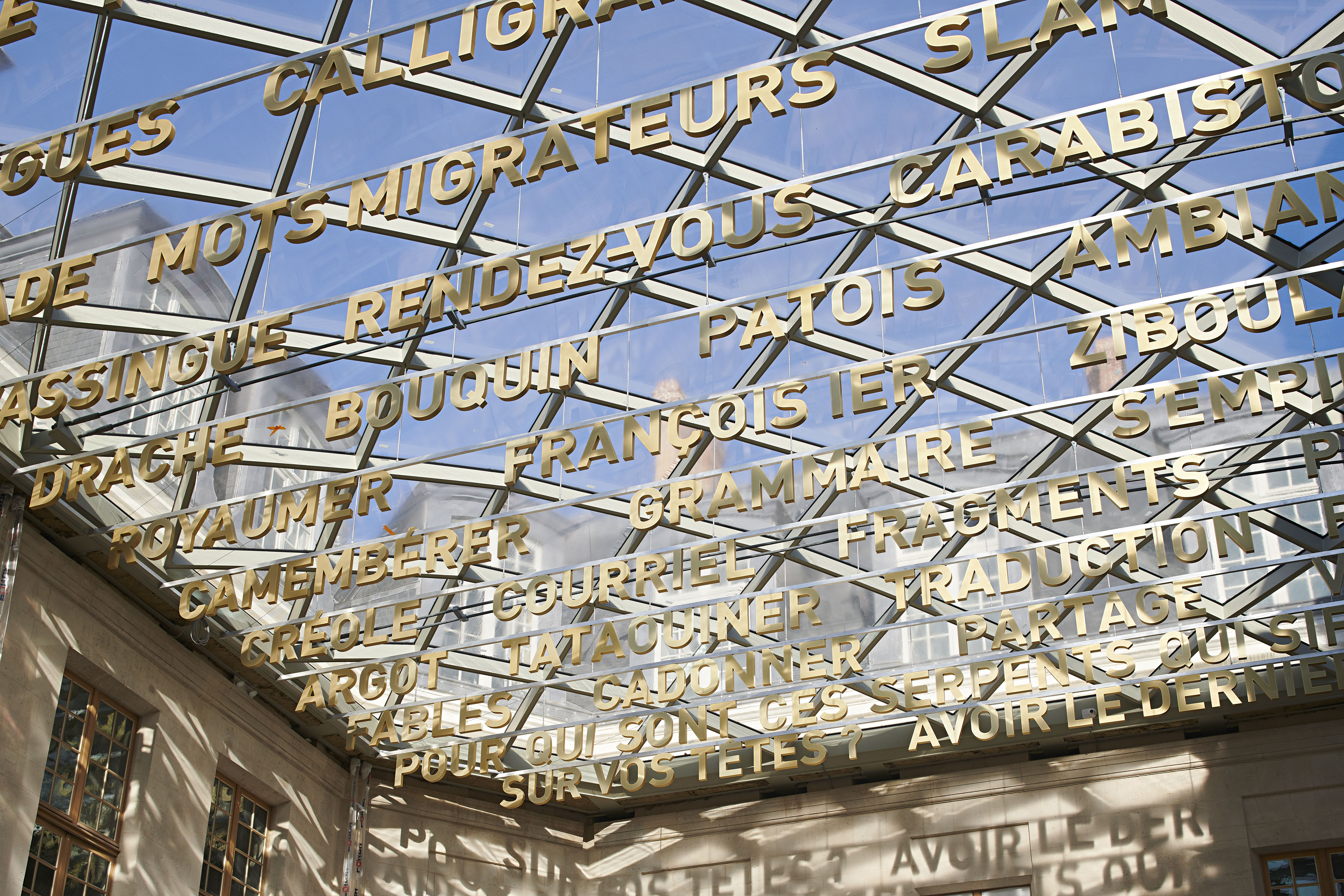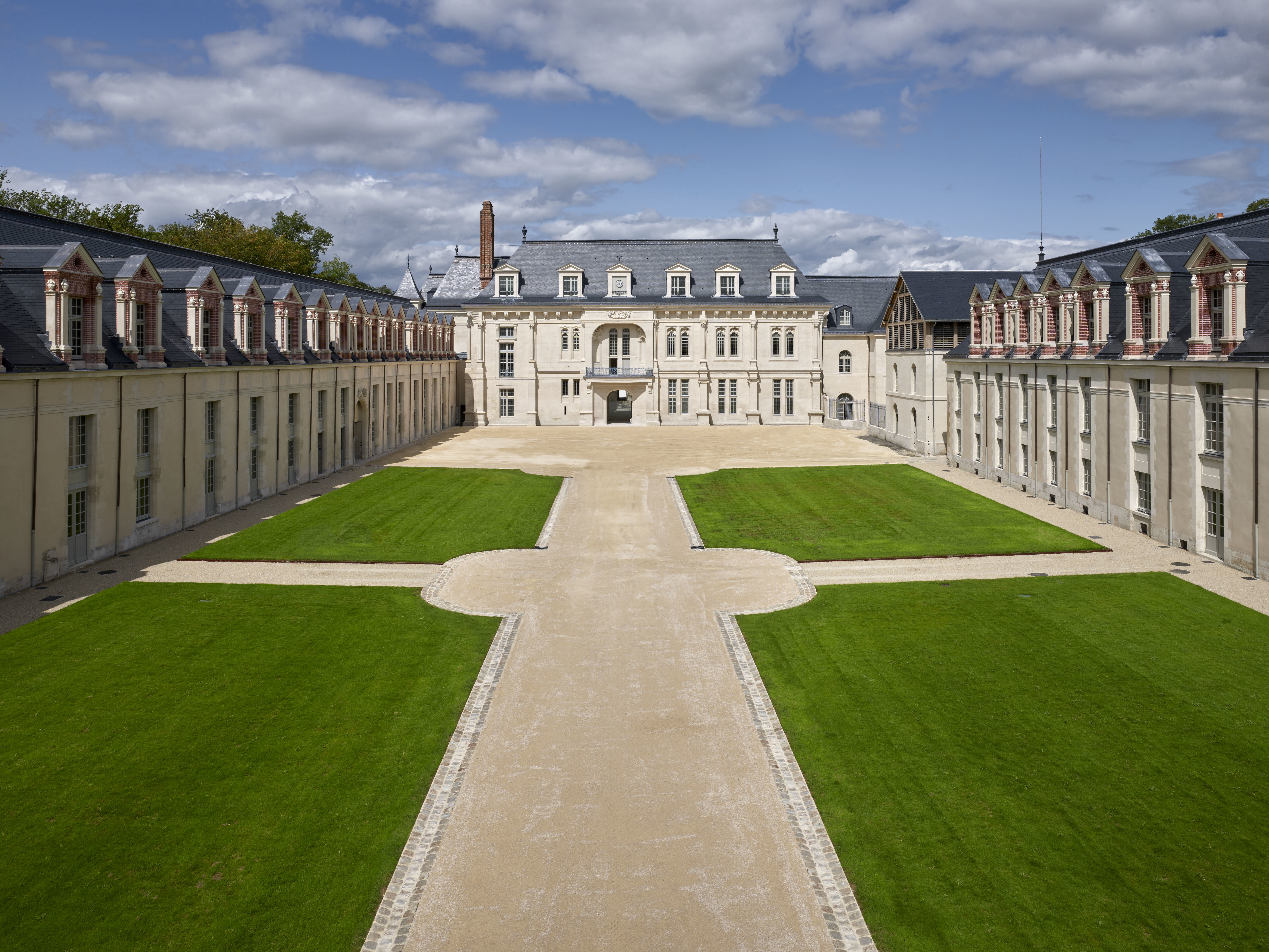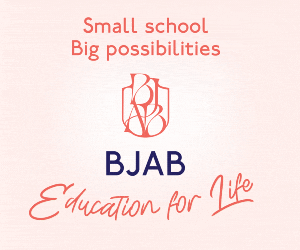
Julian Hale seizes on the chance to immerse himself in the intricacies of the French language.
A new tourist attraction close to Paris has just opened that’s ideal for Francophiles and Francophones, whether native French speakers or not. If you enjoy words, the French language and want to know more about the history of the French language, the Cité Internationale de La Langue Française is the place to go.
The Cité Internationale de La Langue Française is about an hour’s train ride north of Paris in a place called Villers-Cotterêts. It’s a short train ride (about an hour) from Paris Gare du Nord to Villers-Cotterêts followed by a well signposted 15-minute walk to the castle. In the 16th century it was surrounded by a huge hunting area and called ‘Mon plaisir’ [my pleasure] by the French King François I (1515-1547).
“François I came up with an edict in 1539, whereby French replaced Latin”
Villers-Cotterêts was chosen as the location of the museum because this is where François I came up with an edict, in 1539, whereby French replaced Latin as the country’s official language for law and administration. Today there are an estimated 300 million French speakers, making it the fifth most widely spoken language in the world, after Mandarin, English, Spanish and Arabic.
© Didier Plowy and Benjamin Gavaudo – CMN
Throughout the exhibition, there is a plethora of interactive games and touch screen experiences involving the French language, including quizzes about famous French writers. Among the many highlights is a big screen at the start where excerpts of comedians and actors play with words, using plenty of French slang. That certainly gets you in the right mood! From there, you move into a room that talks about the dissemination of French via its colonies and all the different varieties of French (in terms of words and pronunciation) that have emerged over time. Further on, there’s a room where you can listen to a rendition of how famous people from long ago (e.g. François I and Jean d’Arc) probably sounded and the kind of French that they spoke.
For me, one of the best installations is a room where you can click on symbols or words and find out about loan words (words borrowed from French or that French has borrowed from other languages). For instance, déjà vu, which is also used in English and German. The room also has an interactive dial at the centre where you can click and find out facts about how languages rank in terms of numbers of speakers and their official status in international organizations.
Another major highlight is a 360° installation showing how the meanings of words have evolved over time.
“There are fascinating and beautifully presented explanations about the evolution of Latin words”
For those interested in etymology, there are fascinating and beautifully presented explanations about the evolution of Latin words such as caballus into ‘cheval’ (Italian has stayed closer to the Latin with ‘cavallo’ as has Spanish with ‘caballo’ and English has the related word ‘cavalier’). There is also an explanation of how ‘rem’, Latin for a thing, evolved into ‘rien’, French for ‘nothing’, i.e. the opposite of its original meaning! And you can find out where ‘oui’ comes from, with ‘oie’ effectively winning the battle against the word ‘oc’, as in the region of France called the Languedoc (la langue d’oc, literally the language of yes). The explanations are short, clear and fun, using simple diagrams.
Further on, particularly good for children – but maybe adults too – are interactive installations enabling you to test your spelling skills, to understand more about genders (le and la) and to try to guess where someone comes from on a world map from their accent – which is extremely difficult. In this section, you’ll also find excerpts from films to test how well you understand modern day French colloquialisms like ‘kiffer’ – to like.
“There’s a very good short summary of the history of the French language”
Towards the end of the exhibition, there’s a very good short summary of the history of the French language, including a beautiful portrait of Cardinal Richelieu by Philippe de Champaigne (1602–1674), who created the Académie française in 1635, which published its first dictionary in 1694. Among other explanations, look out for the all important Serments de Strasbourg (Strasbourg oaths) in 842, the report by Abbé Gregoire in 1794 (following the French revolution) “on the necessity to crush dialects in favour of one standard French language” and Les lois Ferry (1881-82), introducing free, obligatory and secular primary school education only in French and banning the use of regional languages.
If I had to describe the exhibition in two French words, I would say that it is a good blend of ‘pédagogique’ (educational) and ‘ludique’ (from the Latin ludere, to play). Well worth a visit.
www.cite-langue-francaise.fr













